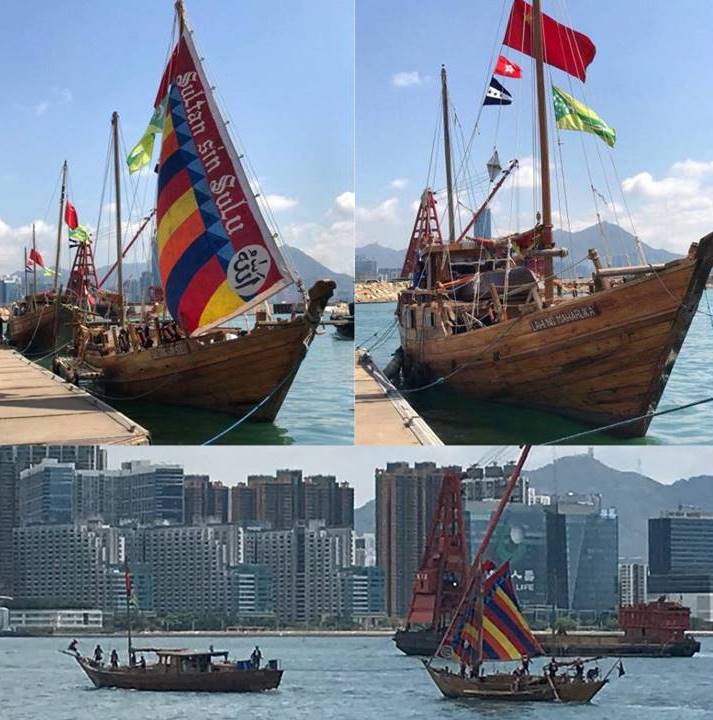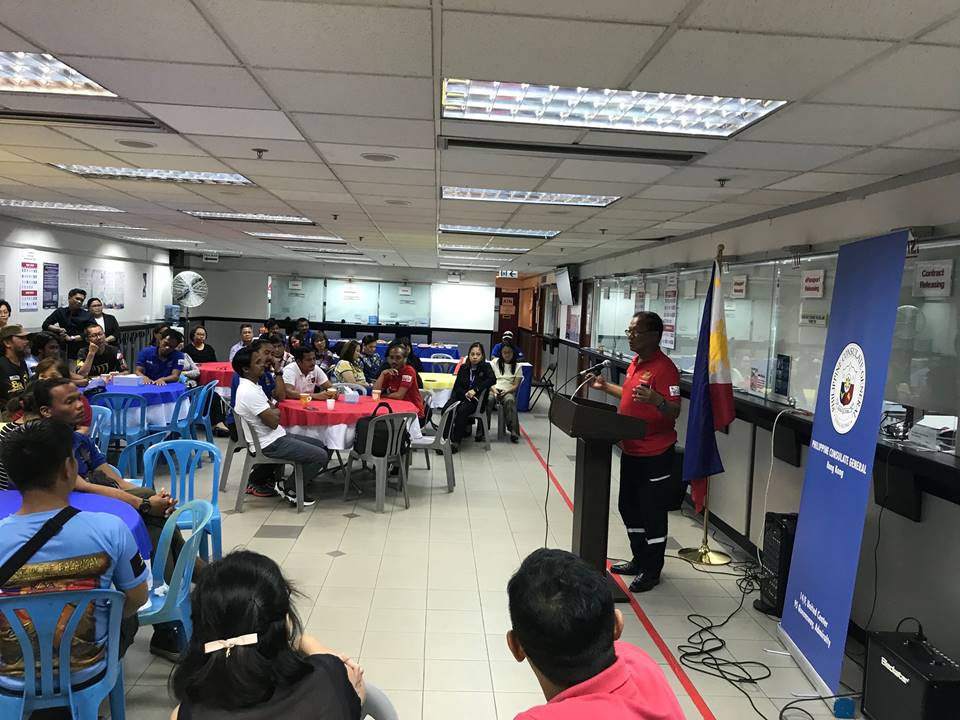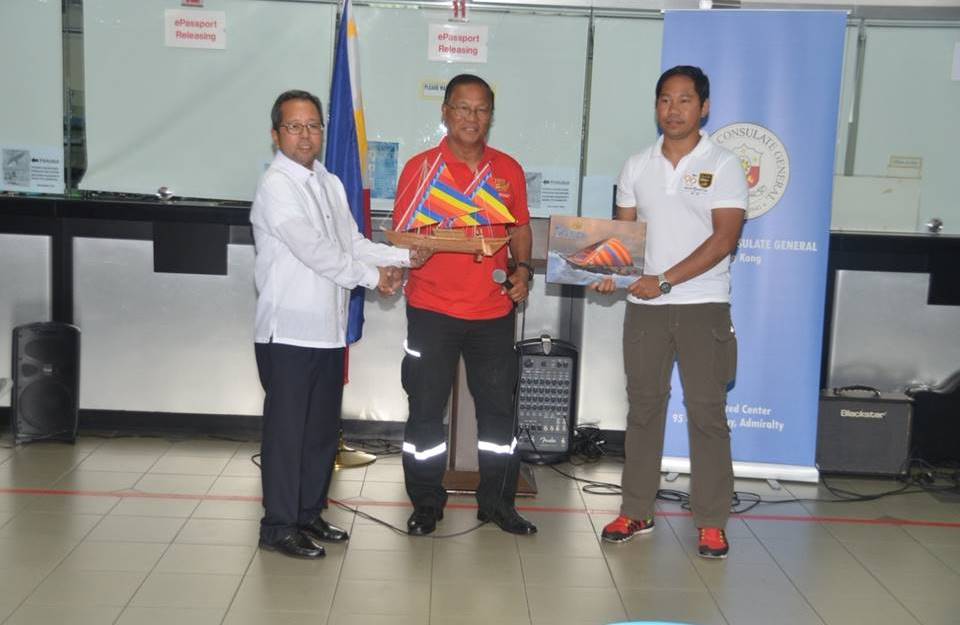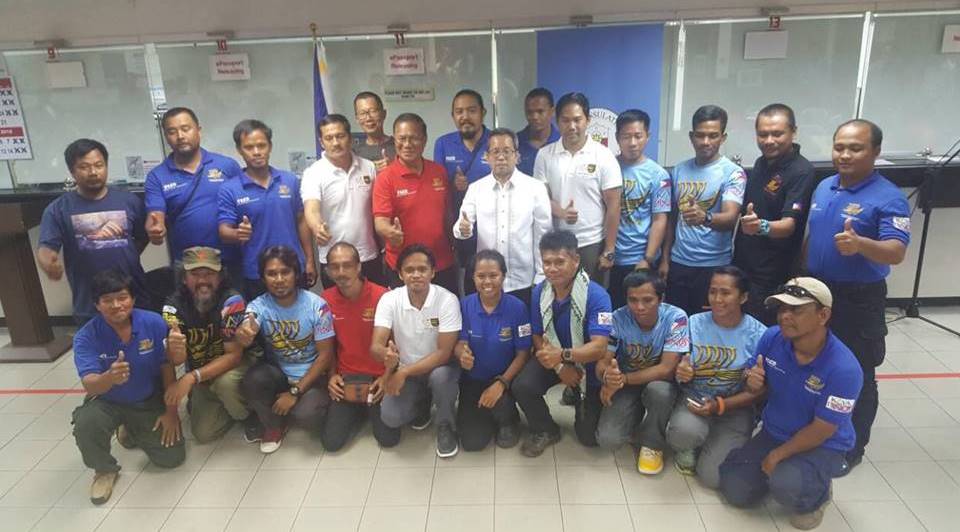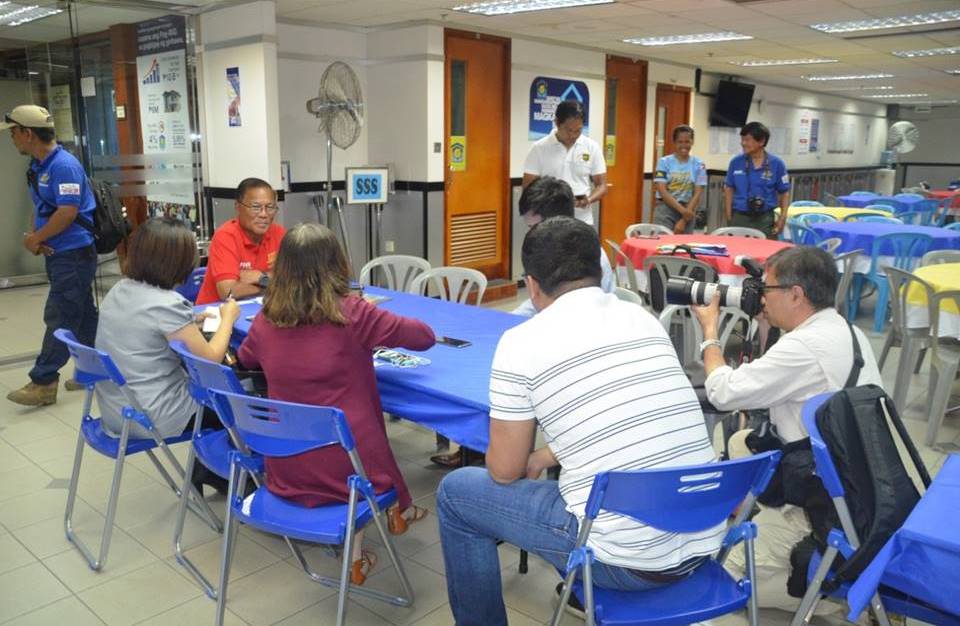HONG KONG, 14 May 2018 – The Philippine Consulate General in Hong Kong hosted a welcome dinner on Monday, 14 May 2018 for the hard-bitten crew of a successful expeditionary return voyage from Manila to Quanzhou using replicas of ancient Filipino hardwood plank boats.
“On behalf of the Consulate, I would like to say how proud we are of your accomplishment,” Consul General Antonio A. Morales told the 34-member crew of the three modern replicas of 15th century balangay boats at the Consulate Chancery. “Your success shows Filipinos can accomplish anything we put our mind to.”
Crafted from a centuries-old design, the three 18-meter balangay boats, namely Sultan Sin Sulu, Sama Tawi Tawi, and Lahi ng Maharlika, embarked on its journey on 28 April from Manila to recreate the voyage made more than 601 years ago by Sulu Sultan Paduka Batara to China in 1417 to open up trade with the Ming Dynasty, but fell ill and died en route on the mainland.
After making a successful voyage to China, the balangay boats arrived at the Royal Hong Kong Yacht Club in Causeway Bay at 3 am on the 14th of May after a 40-hour journey from the eastern Chinese city of Xiamen.
Expedition team leader Arturo T. Valdez, formerly a senior government official and now adventurer, expressed elation at completing the trip beyond the West Philippine Sea across the South China Sea at the third attempt, after missing ideal sailing conditions first in 2009 and again last year to commemorate the sixth centenary of the historic voyage.
“Our voyage should remind us of our origins as an archipelagic people,” said the former Transportation Undersecretary, alluding how 400 years of colonial domination changed the nature of Filipinos as seafarers traversing over more than 7,641 islands. “The waters surrounding us should unite – not divide – us.”
Valdez reminded the audience of almost 100, which comprised Consulate personnel, members of the Filipino community, and invited media professionals from Hong Kong-based foreign and Filipino publications, about the admonition of national hero Dr Jose P. Rizal to learn from the past if one wants to successfully arrive at one’s destination.
According to historical records, Sultan Paduka Batara, together with two other local chieftains, headed north around the coast of South China Sea from Sulu with a retinue of 350 people, including their families, arriving in Beijing in 1417 through the newly renovated Grand Canal for an audience with the Yongle Emperor, Zhu Di, who received and feted them during their stay.
On the return voyage a month later, Sultan Paduka Batara fell sick and died in Dezhou, a town in what is now modern-day Shandong Province. Chinese authorities built a tomb monument in his honor, said to be the only one dedicated to a foreign sovereign on Chinese soil.
The voyage to China is the team’s second maritime quest following a 17-month journey that began in 2009 around Southeast Asian countries – Malaysia, Brunei, Indonesia, Singapore, Thailand, Cambodia and Vietnam – to trace the trade and migration routes of the ancestors of modern-day Filipinos.
This time, the team retrofitted two of the three balangay boats with engines and other basic navigation equipment to comply with Chinese maritime regulations that prohibit wind-powered vessels from docking alone. The third all-wooden vessel, Sultan Sin Sulu, can only be steered using two rudders at the stern and powered by top-deck oars during a dead calm.
Despite the recommended adjustments, the team still needed assistance from the Philippine Consulate General to complete documentary requirements to officially enter and exit Hong Kong waters.
The team was composed mostly of Philippine Coast Guard active duty officers, including Tactical Officer Carina Dayondon, who just completed her ascent of Mt. Aconcagua, South America’s tallest peak in Argentina and the penultimate stop on the way to conquering the so-called Seven Summits, the tallest mountains in each of the seven continents.
Dayondon, together with Janet Belarmino and Noelle Wenceslao, are known to be the only Filipino women not only to have climbed Mount Everest but also done so in a technically difficult traverse – climbing from the northern side in Tibet and going down on the southern side in Nepal – in 2007.
On 16 May 2018 at 12:07 p.m., the three identical Balangays departed Hong Kong, and arrived in Poro Point, La Union on 18 May 2018 at 11:30 p.m. to successfully complete the historic return leg.

